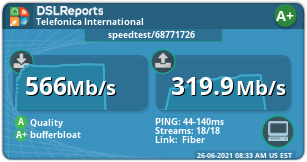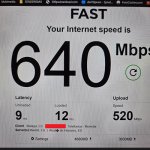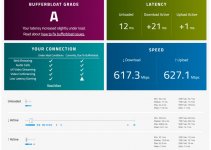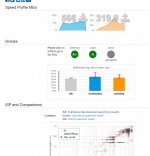Good afternoon!
First of all i want to say sorry for my english because it isnt my native language.
As the title says, I would like to ask your advice to improve the latency of my connection.
I have decided to change the router + ONT HGU GPT-2541GNAC of my ISP (Movistar Spain) precisely because of latency problems. I read that it was a not very powerful router and that it could give bufferbloat problems so I bought an ONT UFIBER Nano G and an Asus RT-AX86U.
With the HGU in dslreports I received very low marks, with the bufferbloat graph always in the red zone. The ping in online games (COD CW and Warzone) was always around 60-70ms at least. This has changed with the AX86U. Now I have a pin beteen 35-45ms. I thought they were more than acceptable results and I couldn't improve any more, but by surprise in the waveform test I see that I have an average download latency of 20-30 ms. The upload is usually 1ms and the idle latency about 10ms on average.
Are these results normal? I have seen people test with 1 ms both in download and upload and I would like to try to achieve this. I hope someone can advise me. Could be ISP related problems or router config?
I have installed the latest merlin in the asus and the flexqos plugin, but the truth is that I have no idea how to configure the qos and others. I imagine that the key will be here, in knowing how to configure them, because I have tried to do it with the qos turned on in adaptive and gaming mode and the results are worse.
I leave you results of the speed tests. All the tests are done with the QOS turned off and all the equipment is wired with CAT 8. The tests are done on a laptop with i7, 16gb of ram and SSD, connected by a USB 3.0 gigabit network adapter. At the time of testing, the only thing that is connected is the laptop itself.
The scheme would be the following ISP FIBER (Movistar Spain 600/600 symmetrical) - ONT Ufiber (bridge mode) - AX86U - 3.0 usb UGREEN gigabit adapter - Laptop


 www.waveform.com
www.waveform.com
I'm going to do a factory reset to the router and wait to see what you tell me! Thanks in advance!!!!
First of all i want to say sorry for my english because it isnt my native language.
As the title says, I would like to ask your advice to improve the latency of my connection.
I have decided to change the router + ONT HGU GPT-2541GNAC of my ISP (Movistar Spain) precisely because of latency problems. I read that it was a not very powerful router and that it could give bufferbloat problems so I bought an ONT UFIBER Nano G and an Asus RT-AX86U.
With the HGU in dslreports I received very low marks, with the bufferbloat graph always in the red zone. The ping in online games (COD CW and Warzone) was always around 60-70ms at least. This has changed with the AX86U. Now I have a pin beteen 35-45ms. I thought they were more than acceptable results and I couldn't improve any more, but by surprise in the waveform test I see that I have an average download latency of 20-30 ms. The upload is usually 1ms and the idle latency about 10ms on average.
Are these results normal? I have seen people test with 1 ms both in download and upload and I would like to try to achieve this. I hope someone can advise me. Could be ISP related problems or router config?
I have installed the latest merlin in the asus and the flexqos plugin, but the truth is that I have no idea how to configure the qos and others. I imagine that the key will be here, in knowing how to configure them, because I have tried to do it with the qos turned on in adaptive and gaming mode and the results are worse.
I leave you results of the speed tests. All the tests are done with the QOS turned off and all the equipment is wired with CAT 8. The tests are done on a laptop with i7, 16gb of ram and SSD, connected by a USB 3.0 gigabit network adapter. At the time of testing, the only thing that is connected is the laptop itself.
The scheme would be the following ISP FIBER (Movistar Spain 600/600 symmetrical) - ONT Ufiber (bridge mode) - AX86U - 3.0 usb UGREEN gigabit adapter - Laptop


Bufferbloat and Internet Speed Test - Waveform
View the full results, and test your own bufferbloat
I'm going to do a factory reset to the router and wait to see what you tell me! Thanks in advance!!!!







